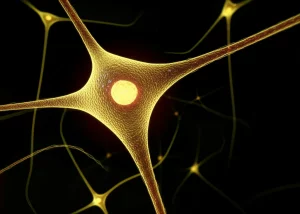Unlock Your Learning Speed: It’s All About Your Brain’s Theta Power!
Hey there! Ever tried to learn a new skill, maybe playing a musical instrument, mastering a sport, or even just getting better at a video game? Some people seem to pick things up like lightning, while others, well, let’s just say it takes a little longer. It’s a common observation, right? We all learn at different speeds, especially when it comes to motor skills – anything that involves our bodies moving and coordinating. But have you ever stopped to wonder *why*? What’s going on inside our heads that makes one person a quick study and another need a bit more practice?
For ages, understanding this individual variability in motor learning has been a bit of a puzzle for scientists. We know practice makes perfect, but the *amount* of practice needed varies wildly from person to person. Pinpointing the exact brain mechanisms behind these differences has been tricky. That’s where tools like electroencephalogram, or EEG, come in handy. Think of EEG as a way to listen in on the brain’s electrical chatter, specifically its rhythms or ‘brain waves’. Different rhythms are linked to different brain states and functions.
The Brain’s Rhythm Section
Our brains are constantly buzzing with electrical activity, oscillating at various frequencies. Scientists categorize these frequencies into bands like delta, theta, alpha, beta, and gamma. Each band seems to play a role in different cognitive and motor functions. For this particular puzzle – why some folks learn motor skills faster – recent research has been pointing a finger at a specific rhythm: frontal midline theta (FMT).
FMT activity hangs out in the 4-8 Hz range and is often detected right in the middle of your forehead area (hence ‘frontal midline’). It’s thought to originate from a brain region called the anterior cingulate cortex (ACC). Now, the ACC is like the brain’s air traffic controller for tough situations. It steps in when tasks require effort, attention, or conflict resolution – basically, when you need to adapt your behavior. And guess what? Adapting your behavior is *exactly* what motor learning is all about, especially when you make mistakes and need to correct them. Previous studies have shown that an *increase* in FMT is linked to getting better at tasks and correcting errors. This makes FMT a prime suspect in understanding motor learning.
But here’s where it gets interesting. Brain activity isn’t just about the *strength* of the signal (that’s power or amplitude); it’s also about the *timing* of the signal (that’s phase). Imagine a group of musicians: power is how loud they’re playing, phase is whether they’re all hitting the beat at the same time. Both matter for the overall sound. Scientists have wondered if it’s the *amount* of FMT activity (power) or how *synchronized* it is across trials (phase consistency) that really explains why some people learn faster than others.
Putting Brains to the Test
To get to the bottom of this, we invited a group of healthy participants (21, mostly right-handed young men) into the lab for a little experiment. We hooked them up to an EEG system to record their brain waves. Their task was a visuomotor tracking game: they had to control a cursor on a screen by applying force with their index and little fingers to track a moving target. The twist? We messed with the controls. Initially, the finger forces translated to cursor movement in a straightforward way. Then, we suddenly tripled the sensitivity of the little finger sensor. This meant participants had to learn a *new* way to coordinate their fingers to keep the cursor on target. It’s like suddenly changing the steering ratio in your car – you have to adapt!
We measured how quickly they got better at this new, tricky control scheme. This ‘learning proficiency rate’ became our key behavioral measure of how fast someone learned. While they were doing this, we paid close attention to their brain activity, particularly the FMT rhythm, especially in the moments *before* they started tracking the target on each trial (the ‘motor preparation’ period). We analyzed both the *power* (how strong the FMT signal was) and the *phase consistency* (how locked-in the timing of the FMT signal was from one trial to the next) during this preparation time.

What the Wavy Lines Told Us
What we found was pretty cool and shed some light on those individual differences we talked about. First off, everyone got better at the task, just at different rates. This confirmed that our little game was indeed prompting motor learning.
When we looked at the brain data, the big finding jumped out: there was a significant positive correlation between the *increase* in FMT power during the motor preparation period and how fast someone learned. In plain English? People whose brains showed a stronger boost in FMT activity right before they started tracking the target were the ones who learned the new control rule more quickly. The more that FMT signal ramped up, the faster they improved. This correlation was particularly strong in the final half-second leading up to the movement.
Interestingly, when we looked at the *phase consistency* of the theta rhythm during preparation – whether the timing of the brain wave was synchronized across trials – we found no significant link to learning speed. This suggests that for explaining *individual differences* in how fast you learn a motor skill, it’s the *amount* or *strength* of the preparatory FMT activity that matters, not necessarily its precise timing or synchronization from trial to trial.
We also checked if someone’s initial skill level (their baseline performance before the trickier control was introduced) affected this relationship, but it didn’t. The link between FMT power and learning speed held true regardless of how good they were starting out.
Why Power Matters, Not Just Timing
So, what does this all mean? Our findings provide compelling evidence that the *power* of your frontal midline theta activity during motor preparation is a key neurobiological factor that helps explain why some of us are faster motor learners than others. It seems that a stronger, more robust FMT signal before you even start moving is a signature of a brain ready to quickly adapt and correct errors.
This fits nicely with what we know about the ACC, the likely source of this FMT activity. The ACC is all about cognitive control, monitoring performance, detecting errors, and guiding future actions. A stronger FMT signal might reflect a higher level of engagement in these processes – perhaps a greater allocation of cognitive resources towards anticipating the upcoming task demands, monitoring for errors, and preparing to adjust. This flexible, high-activity state, reflected by increased FMT power, seems to be particularly beneficial for rapidly acquiring new motor skills.

While phase synchronization is super important for many brain functions, like coordinating activity between different areas or processing sensory information, our study suggests it might not be the primary driver of *individual differences* in motor learning speed in this context. It’s the sheer *oomph* of the preparatory theta power that seems to predict how quickly you’ll master that new skill.
Real-World Implications
Understanding the brain basis of individual learning differences isn’t just cool science; it has practical implications. Imagine personalized training programs in sports, music, or even physical rehabilitation. If we can identify neural markers like FMT power that predict learning speed, we might be able to tailor training methods to individuals. For someone with lower preparatory FMT power, maybe they need different types of practice or specific cues to boost that activity. For someone with higher power, perhaps they can be challenged in different ways. This could lead to more efficient and effective learning for everyone.
The Road Ahead
Of course, science is always a journey, and there are still questions to explore. While we focused on the FCz electrode, which is known to pick up ACC activity, future studies could use more advanced techniques like source localization or fMRI to pinpoint the brain regions involved with even greater precision. Also, our study shows a *correlation* – FMT power predicts learning speed – but it doesn’t definitively prove that boosting FMT *causes* faster learning. Future research using techniques like neurofeedback or brain stimulation could directly test this causal link. And yes, getting a more balanced group of participants in terms of gender would be important for ensuring the findings apply broadly.
Conclusion
But for now, the takeaway is pretty clear and exciting: that subtle rhythm in the middle of your forehead, the frontal midline theta, especially its *power* right before you act, seems to hold a key to how quickly you’ll conquer new motor challenges. It’s a fascinating glimpse into the neural machinery that makes each of us a unique learner.
Source: Springer


![Macro lens, 60mm, high detail, precise focusing image of a collection of colorful, glowing 3D molecular models representing the 2-(Aryl)benzo[d]imidazo[2,1-b]thiazole-7-sulfonamide derivatives, arranged on a dark, reflective surface with artistic, controlled lighting to emphasize their complex structures and potential as antitubercular and antibacterial agents.](https://scienzachiara.it/wp-content/uploads/2025/05/149_macro-lens-60mm-high-detail-precise-focusing-image-of-a-collection-of-colorful-glowing-3d-molecular-models-300x150.webp)




